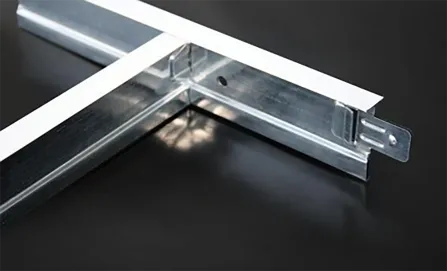Dec . 07, 2024 00:54 Back to list
grid ceiling material price
Understanding Grid Ceiling Material Prices A Comprehensive Guide
Grid ceilings, also known as suspended ceilings or drop ceilings, are an essential component of modern interior design and construction. They offer aesthetic appeal, efficient use of space, and valuable insulation properties. The materials used in grid ceilings significantly affect their pricing, making it crucial for homeowners, contractors, and architects to understand the factors that influence these costs.
Types of Grid Ceiling Materials
Grid ceilings can be constructed from a variety of materials, each offering different benefits and price points. The most common materials include
1. Mineral Fiber Tiles These are perhaps the most popular choice for grid ceilings due to their sound absorption qualities and affordability. Prices typically range from $0.50 to $2.50 per square foot, depending on the texture and finish.
2. Acoustic Ceiling Tiles Similar to mineral fiber tiles, acoustic tiles are designed specifically to absorb sound, making them perfect for offices and conference rooms. They can range from $1 to $3 per square foot, with higher-end options available for specialized needs.
3. Metal Tiles For a sleek, modern look, many choose metal tiles. These are more durable and often used in commercial settings. However, their prices can range significantly, from $3 to $12 per square foot, depending on the type of metal and design.
4. PVC Tiles Lightweight and moisture-resistant, PVC tiles are an excellent choice for areas with high humidity, such as bathrooms and kitchens. The cost generally lies between $1 and $4 per square foot.
5. Wood Tiles For a more upscale appearance, wood tiles can add warmth and sophistication. However, they are generally more expensive, with prices ranging from $5 to $15 per square foot, depending on the wood type and finish.
Factors Influencing Prices
grid ceiling material price

Several factors contribute to the pricing of grid ceiling materials
1. Material Quality Higher quality materials typically come with a higher price tag. For instance, eco-friendly or fire-resistant tiles may cost more upfront but provide long-term savings through energy efficiency and safety.
2. Design and Aesthetics Intricate designs, textures, and finishes can significantly increase the cost of ceiling materials. Custom designs may also require special orders from manufacturers.
3. Size and Coverage Area The larger the area to be covered, the more materials will be required, and potentially the more labor involved in installation, which can add to the overall cost.
4. Installation Complexity Some materials are easier to install than others. For example, standard mineral fiber tiles are typically easier and quicker to install than complex metal tiles, which may require specialized skills and tools.
5. Brand and Manufacturer Established brands often charge a premium for their products due to perceived reliability and quality. However, lesser-known brands might offer competitive pricing, allowing for budgetary flexibility.
Conclusion
When planning a grid ceiling installation, it's important to consider not only the initial costs of materials but also their long-term value. While cheaper options might save money initially, investing in higher-quality materials can lead to better durability, aesthetics, and acoustic performance. Additionally, consulting with professionals can provide insights into the best materials suited for specific applications, ultimately enhancing the overall effectiveness of the ceiling.
In summary, understanding grid ceiling material prices involves a blend of materials knowledge, cost estimation, and design considerations. By weighing the various options and factors influencing prices, homeowners and designers can make informed decisions that align with both their budgetary constraints and aesthetic goals, resulting in a successful and appealing ceiling installation. Whether it's for a residential renovation or a commercial project, choosing the right grid ceiling materials can elevate a space while providing functional benefits that stand the test of time.
-
Durable Ceiling T Grid Systems | Easy InstallationNewsAug.29,2025
-
PVC Gypsum Ceiling: Durable, Laminated Tiles for Modern SpacesNewsAug.28,2025
-
Pvc Gypsum Ceiling Is DurableNewsAug.21,2025
-
Mineral Fiber Board Is DurableNewsAug.21,2025
-
Ceiling Tile Clip Reusable DesignNewsAug.21,2025
-
Ceiling T Grid Modular DesignNewsAug.21,2025







